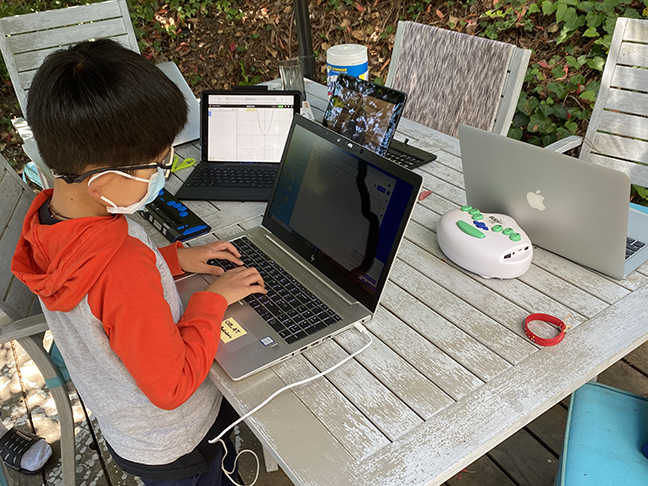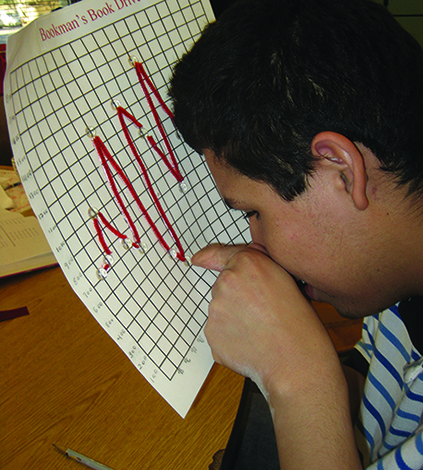The third study included three groups of participants:
1. Family members of children who are blind or have low vision: Twenty English-speaking and five Spanish-speaking parents of children who are blind or have low vision participated in interviews and focus groups, and an additional 10 Spanish-speaking parents responded to a survey. The Spanish-speaking participants were recruited through targeted outreach on social media and through local Latinx blindness community leaders. Spanish-speaking participants completed surveys and interviews in Spanish, and a bilingual researcher translated the interview transcripts and survey responses into English. Demographic details are included in Table 1.
2. Educators: One hundred thirty-four educators who served at least one student who is blind or has low vision in the 2020-2021 school year responded to a survey, and 11 teachers of students with visual impairments (TVIs) who served students during the 2020-2021 school year participated in focus groups. Details on the professional breakdown of the educators are included in Table 2.
3. School administrators: Six administrators of schools for the blind and three state vision services consultants participated in focus groups and interviews. These individuals represented districts across the country, serving a range of urban, suburban, and rural areas.
Table 1: Demographics of Families
* Spanish-speaking participants identified as White
Table 2: Educator Characteristics
*TVI=teacher of visually impaired
**O&M=orientation and mobility specialist
***EI=early intervention provider

The findings from the Access and Engagement III study provide a more complete picture of education for students who are blind or have low vision over the course of the COVID-19 pandemic and their return to in-person learning. In particular, the Access and Engagement III study focuses on three areas of concern that emerged during the pandemic from the previous studies: access to technology and its challenges, the impacts on learning progress, and the impacts on the social-emotional well-being of children who are blind or have low vision, their families, and educators. Additionally, this study includes in-depth qualitative findings from populations uniquely impacted by the pandemic, especially families of children with significant additional disabilities and families whose primary language is Spanish.
Study responses point not only to the unique challenges caused by the pandemic but also to longer-standing problems and inequities that were underscored during the pandemic. These must be addressed as schools and communities move into the “new normal” as the pandemic subsides. At the same time, some families and educators identified some positive outcomes and benefits for the learning progress of students during the pandemic. While it is clear that the pandemic will have lasting impacts on students, families, and educators, it has also provided important lessons that can guide the future education of students who are blind or have low vision, including those with additional disabilities and deafblindness.

1. Family members of children who are blind or have low vision: Twenty English-speaking and five Spanish-speaking parents of children who are blind or have low vision participated in interviews and focus groups, and an additional 10 Spanish-speaking parents responded to a survey. The Spanish-speaking participants were recruited through targeted outreach on social media and through local Latinx blindness community leaders. Spanish-speaking participants completed surveys and interviews in Spanish, and a bilingual researcher translated the interview transcripts and survey responses into English. Demographic details are included in Table 1.
2. Educators: One hundred thirty-four educators who served at least one student who is blind or has low vision in the 2020-2021 school year responded to a survey, and 11 teachers of students with visual impairments (TVIs) who served students during the 2020-2021 school year participated in focus groups. Details on the professional breakdown of the educators are included in Table 2.
3. School administrators: Six administrators of schools for the blind and three state vision services consultants participated in focus groups and interviews. These individuals represented districts across the country, serving a range of urban, suburban, and rural areas.
Table 1: Demographics of Families
| Race/Ethnicity | ||
|---|---|---|
| White* | 15 | 43% |
| Hispanic or Latinx | 12 | 34% |
| Black or African American | 2 | 6% |
| Asian | 1 | 3% |
| Native American | 1 | 3% |
| Multiracial | 1 | 3% |
| Declined to Respond | 3 | 10% |
| School Stage Of Child | ||
| Early Intervention | 3 | 9% |
| Preschool | 3 | 9% |
| Elementary | 15 | 43% |
| Middle/High | 14 | 39% |
| Children With Additional Disabilities | ||
| Yes | 20 | 57% |
| No | 15 | 43% |
* Spanish-speaking participants identified as White
Table 2: Educator Characteristics
| Role | ||
|---|---|---|
| TVI | 83 | 62% |
| O&M** | 10 | 7% |
| Both TVI and O&M | 24 | 18% |
| Special Education Teacher | 9 | 7% |
| Paraprofessional | 8 | 6% |
| EI Provider*** | 7 | 5% |
| General Education Teacher | 4 | 3% |
| White* | 15 | 43% |
| Gender | ||
| Cisgender Female/Woman | 129 | 88% |
| Cisgender Male/Man | 8 | 6% |
| Gender Not Provided | 8 | 6% |
| Race/Ethnicity | ||
| Non-Hispanic White | 121 | 84% |
| Hispanic White | 5 | 3% |
| Non-Hispanic Black | 5 | 3% |
| Asian | 2 | 1% |
| American Indian or Alaska Native | 1 | 1% |
| Hispanic, Two Or More Races | 1 | 1% |
| Non-Hispanic, Two Or More Races | 4 | 3% |
| I Prefer Not to Answer | 6 | 4% |
*TVI=teacher of visually impaired
**O&M=orientation and mobility specialist
***EI=early intervention provider

The findings from the Access and Engagement III study provide a more complete picture of education for students who are blind or have low vision over the course of the COVID-19 pandemic and their return to in-person learning. In particular, the Access and Engagement III study focuses on three areas of concern that emerged during the pandemic from the previous studies: access to technology and its challenges, the impacts on learning progress, and the impacts on the social-emotional well-being of children who are blind or have low vision, their families, and educators. Additionally, this study includes in-depth qualitative findings from populations uniquely impacted by the pandemic, especially families of children with significant additional disabilities and families whose primary language is Spanish.
Study responses point not only to the unique challenges caused by the pandemic but also to longer-standing problems and inequities that were underscored during the pandemic. These must be addressed as schools and communities move into the “new normal” as the pandemic subsides. At the same time, some families and educators identified some positive outcomes and benefits for the learning progress of students during the pandemic. While it is clear that the pandemic will have lasting impacts on students, families, and educators, it has also provided important lessons that can guide the future education of students who are blind or have low vision, including those with additional disabilities and deafblindness.
